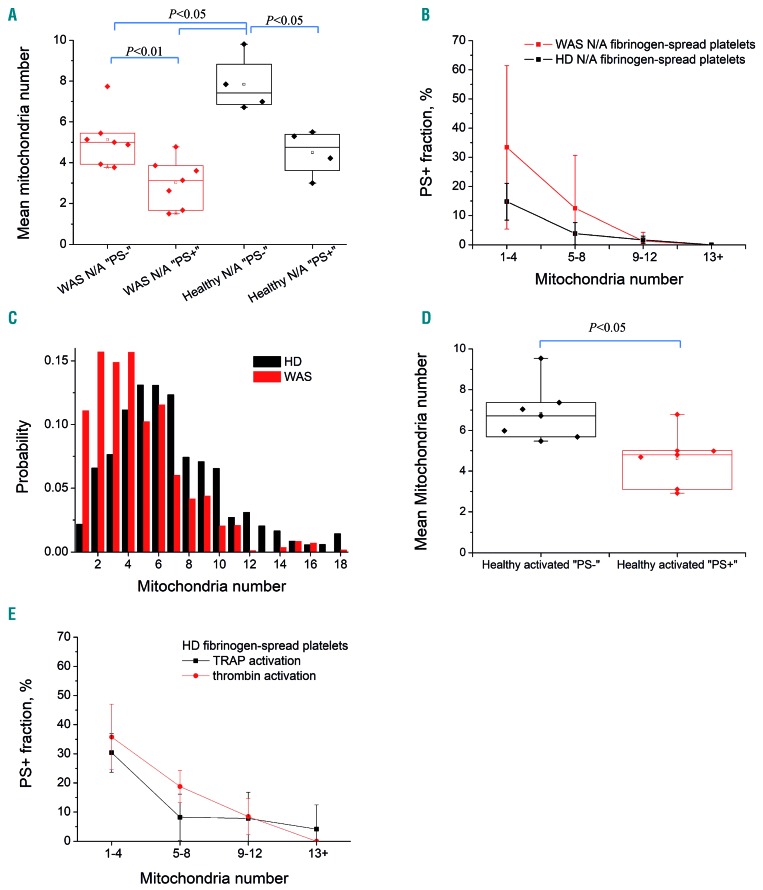Figure 5.
Dependence of phosphatidylserine exposure on mitochondria count. Platelets that exposed phosphatidylserine (PS) during incubation on fibrinogen contained significantly fewer mitochondria than PS- cells. (A) Mean mitochondria number in platelet subpopulations per patient with Wiskott-Aldrich syndrome (WAS) or per healthy donor (HD) for non-activated (N/A) fibrinogen-bound platelets. Each dot represents one WAS patient (7 patients, 381 platelets) or HD (n=4, 567 platelets). (B) Averaged PS+ fraction ± standard deviation of the same WAS and HD platelets with different mitochondrial counts. (C) Averaged distribution of mitochondria per platelet (both subpopulations) for WAS patients (7 patients, 381 platelets) and HD (11 HD, 1,179 platelets). (D, E) Healthy activated platelets, overall 613 cells from seven HD activated with TRAP-6 (n=5, 306 cells) or thrombin (n=4, 307 cells). Platelets most likely to expose PS had fewer mitochondria. Mitochondria were counted by TMRM fluorescence using a microscope after spreading for 20 min (before activation in experiments with activated platelets from HD); subpopulation were determined after an additional 30 min incubation. Each dot represents the mean of the mitochondria count in a patient or HD (A,C). P: Mann–Whitney U-test. TRAP-6: thrombin receptor agonist peptide-6: TMRM: tetramethylrhodamine methyl ester.

